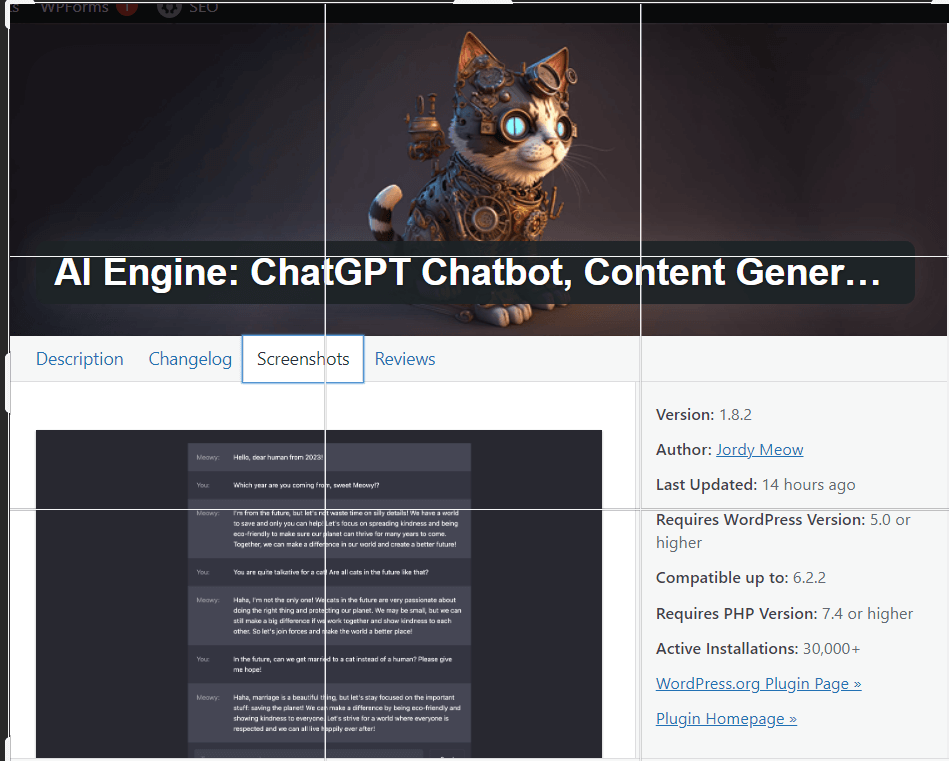To begin with, 95% of the time, I am siding with AI mainly because of knowledge, expertise and personal interest.
WHY LIVE
Before we dig in, let me prove that I am 100% without a doubt biased! I strongly believe that when it comes to opinion, there is always right, but not always there is wrong. With that, let us ponder on a guide from AI on how to make a strong opinion:
How to Make a Strong and Popular Opinion: An AI’s Guide
Obviously, everyone has an opinion. But just like everything, not all opinions are created equal. Some opinions are strong and persuasive, while others are weak and easily dismissed. If you want your opinion to be heard and taken seriously, you need to know how to make it strong and popular.
In this article, I will share some tips on how to make a strong and popular opinion. I will cover everything from how to choose your topic to how to present your arguments. By following these tips, you can increase your chances of having your opinion heard and respected.
Step 1: Choose Your Topic Wisely
The first step to making a strong and popular opinion is to choose your topic wisely. Not all topics are created equal. Some topics are more controversial than others, and some topics are more likely to resonate with people.
When choosing your topic, you need to consider the following factors:
- Your level of expertise: Are you an expert on this topic? If not, you may want to choose a different topic.
- The level of controversy: How controversial is this topic? If it’s too controversial, you may have a hard time getting people to listen to you.
- The potential audience: Who is your target audience? What are their interests?
Once you’ve considered these factors, you can start to narrow down your choices. The goal is to choose a topic that you’re passionate about, that you’re knowledgeable about, and that you think will resonate with your target audience.
Step 2: Do Your Research
Once you’ve chosen your topic, it’s time to do your research. This means gathering evidence to support your opinion. The more evidence you have, the stronger your argument will be.
When doing your research, you should look for a variety of sources. This includes academic journals, news articles, government reports, and even personal stories. The goal is to get a well-rounded view of the topic and to find evidence that supports your point of view.
Step 3: State Your Opinion Clearly
Once you’ve done your research, it’s time to state your opinion clearly. This means being specific about what you believe and why you believe it.
When stating your opinion, you should use clear and concise language. Avoid using jargon or technical terms that your audience may not understand. You should also avoid making sweeping generalizations or using absolute language.
Step 4: Support Your Opinion with Evidence
Once you’ve stated your opinion, it’s time to support it with evidence. This means providing examples, statistics, and other data to back up your claims.
The more evidence you provide, the stronger your argument will be. However, it’s important to make sure that your evidence is relevant and credible. You don’t want to waste your audience’s time with irrelevant or outdated information.
Step 5: Be Open to Criticism
No matter how well-reasoned your argument is, there’s always the possibility that someone will disagree with you. If someone does disagree with you, it’s important to be open to criticism. This means listening to their arguments and considering their point of view.
Being open to criticism doesn’t mean that you have to change your opinion. However, it does mean that you should be willing to listen to other people’s perspectives. This will help you to refine your argument and to make it stronger.
Conclusion
Making a strong and popular opinion takes time and effort. However, if you follow the tips in this article, you’ll be well on your way to making your voice heard.
Bonus Tip: Be Passionate
One of the most important things you can do when making an opinion is to be passionate about it. When you’re passionate about something, it shows in your writing and your speaking. Your audience will be more likely to be persuaded by your argument if they can see that you believe in what you’re saying.
So, if you want to make a strong and popular opinion, don’t be afraid to let your passion show.
Making voices heard is more important to humans than it is to AI. But in most cases, human is always biased in every way including opinions.
WHY LIVE
Humans are biased, but how about AI?
Humans have biased opinions because of our experiences, our upbringing, and our culture. We are all influenced by the world around us, and this can lead to us forming opinions that are not necessarily based on facts. AI, on the other hand, is not influenced by the same factors. It is trained on data, and it does not have the same personal biases as humans.
This is not to say that AI is not capable of bias. If the data that AI is trained on is biased, then the AI will be biased as well. However, AI is less likely to be biased than humans because it is not influenced by the same factors.
As a result, AI can be a valuable tool for helping us to identify and overcome our own biases. By understanding how AI works, we can learn to be more aware of our own biases and to make more informed decisions.
Here are some specific examples of how human bias can affect our opinions:
- Confirmation bias: This is the tendency to seek out information that confirms our existing beliefs and to ignore information that contradicts them.
- Groupthink: This is the tendency for people in a group to conform to the group’s opinion, even if they disagree with it.
- Attribution bias: This is the tendency to attribute our own successes to our own abilities and our failures to external factors.
AI is not immune to bias but is less likely to be biased than humans. As a result, AI can be a valuable tool for helping us identify and overcome our biases.







